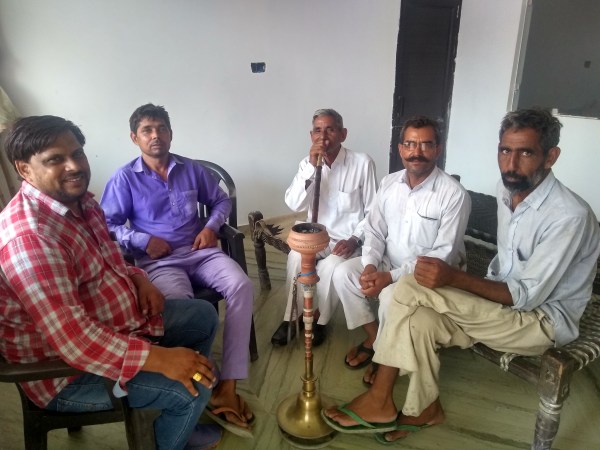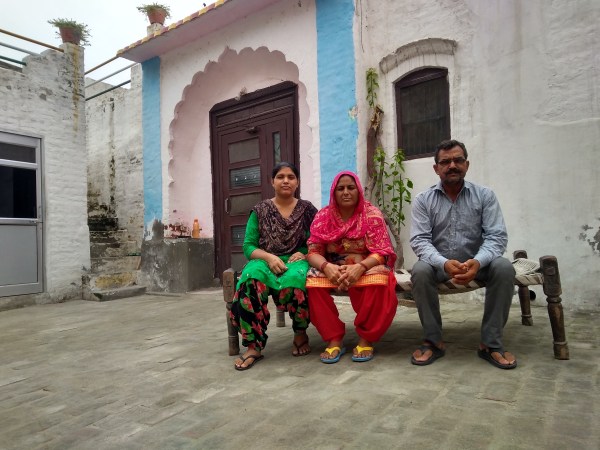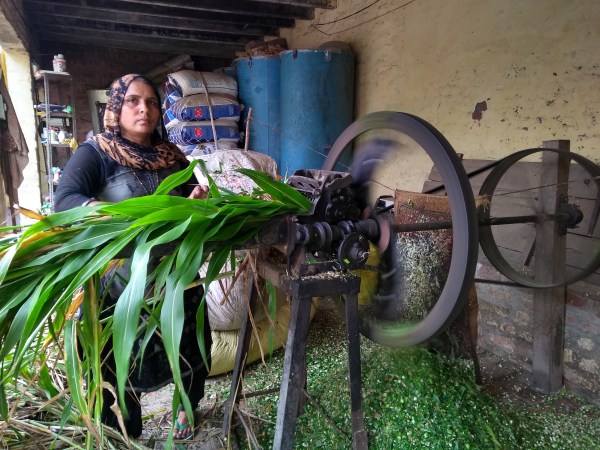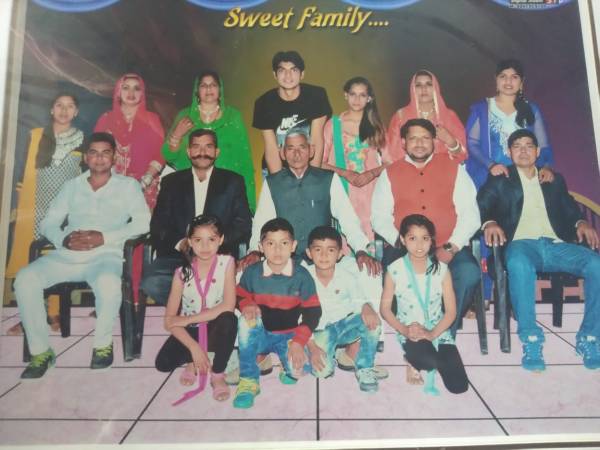 Asian Games expectations swell on javelin thrower Neeraj Chopra.
Asian Games expectations swell on javelin thrower Neeraj Chopra.
A 16 km drive from Panipat, through the picturesque Assandh road, where you will spot a theka (liquor store) every 500 metres, lies Khandra. The village, which houses nearly 500 families, doesn’t possess a playground, stadium or even a gym. The youngsters either work on the sprawling family fields or switch to cities for livelihood. Even the closest run-down gym is about six kilometres away.
It’s hard to fathom that despite the apparent nondescriptness, Khandra bred one of India’s, nay the world’s, brightest sportstars, Neeraj Chopra. The 20-year-old javelin thrower holds the national record (87.43m), the U-20 world record (86.48m) , besides winning a clutch of other gold medals, from World Junior Championship to the Commonwealth Games, and is primed to repeat his feats at the Asian Games, a little less than a fortnight away. The records and laurels are ticking away, though the town, rather the village, is steeped in timelessness, but unabatedly awaiting another page of history to be penned by Neeraj’s spearing javelin, or as they call ‘bhala phek’. The identity of the village is now inter-twined with Neeraj himself.
The stretch of endless fields doesn’t come across as a fertile land for breeding world-class athletes. Neither did Chopra show signs that he would emerge as one. As a kid, he was grossly over-weight, weighing 90 kg at the age of 12, so much so that when he wore an all-white new kurta-pyjama the kids in the village began to tease him, calling him a sarpanch (village chief).
 Neeraj Chopra’s joint family of 17 has had a big role to play in his phenomenal rise. Neeraj’s father Satish Kumar.
Neeraj Chopra’s joint family of 17 has had a big role to play in his phenomenal rise. Neeraj’s father Satish Kumar.
“The moment the kids saw him in his new kurta, they teased him saying, ‘Dekho, sarpanch ji agaye’ (See, the village chief has arrived),” says Neeraj’s uncle Bhim Chopra. It was meant to be a kiddish, harmless joke, but it pinched Neeraj, and more so his family.
Being the eldest child in a joint family of 17 members meant that his doting grandmother guaranteed he got a lion’s share of the malai, makhan and doodh. And Neeraj would never say no to another generous helping, a major reason for putting on weight.
His sarpanch-like appearance was deceptive though, for he was extremely mischievous and borderline notorious. Every member of the family rattles out a childhood antic of his. He once set a part of the house on fire while trying to shoo away bees from a tree adjacent to their home. It wasn’t the bees, but the Chopra household that had to vacate the area.
“Sham ko uski achi kuttai hui (He got a sound beating in the evening),” uncle Bhim says with a wide grin on his face. Another such incident, which qualified for another “kuttai”, happened a few years before the bee episode. Upset with the class teacher for not letting him go home early, he threw his school bag into the village well while returning and proudly narrated the incident to his parents. No prizes for guessing what transpired next.
 Neeraj’s grandfather and his uncles ensured that Neeraj travelled the extra mile to achieve world repute.
Neeraj’s grandfather and his uncles ensured that Neeraj travelled the extra mile to achieve world repute.
Even the cows at home weren’t spared. “He used to tie their tails in knots. Once we heard him calling for help from the cattle shed and when we reached there, we found him on the floor. He said he was trying to sit on the cow’s back but it pushed him down,” narrates uncle Sultan, as the rest of the family members are in splits. There are enough vignettes for a racy biography already.
The naive mischief hardly bothered them, though they were seriously concerned about his weight. “We didn’t want him to grow up as an obese man. When he came home that day telling us that the kids were teasing him by calling him sarpanch, we felt hurt.We needed to do something,” father Satish Kumar recalls.
Madluada is a small town that’s about six kilometres from Neeraj’s home. But there was a basic gym, where his family enrolled him, despite his initial reluctance. It meant that he had to cycle 24km a day, including the journey to and fro from school. After returning home from school he would still indulge in some calorific intemperance—a heavy dairy-rich meal of ghee-soaked paranthas and tall glasses of fresh, creamy milk before rushing to the gym. But they didn’t mind, as long as he was burning the calories away.
At the gym, it wasn’t easy for Neeraj. He was among the youngest members, and half his time was spent on vacating equipment for his seniors.
 Neeraj’s sister Geeta with their parents Saroj and Satish.
Neeraj’s sister Geeta with their parents Saroj and Satish.
At the end of the session, he would be working with equipment none of the elders wanted to use. He told his parents he didn’t like the gym one bit, but instead of stopping his gym sessions, they sent him to Panipat. In hindsight, this was perhaps the first step towards achieving a dream, which he hadn’t even begun to dream.
His workouts ended by six, but his uncle Bhim would generally reach there between seven or eight to pick him up. Out of boredom, he started going to the Panipat SAI centre, a quick walk from the gym. That’s where javelin thrower Jaiveer began noticing him.“I just asked him if he would like to throw the javelin once. Without any training, he threw close to 40m and I was so impressed. From there on, I trained him for a year and saw that he had the desire to do something (bigger). Once, during a gruelling running session he fainted out of exhaustion, such was his desire,” recalls Jaiveer, whose personal best is a good 10 metres short of Neeraj’s.
Jaiveer, fondly called Monu, doesn’t brag about his influence in shaping Neeraj. With an understated tone, he says: “I am just glad I could help him and now I am part of his family. What’s special about him is that despite becoming a World Champion his attitude has not changed. He’s very friendly and as down-to-earth as one can be.”
Neeraj, who is a Subedar with the Indian army, owes a lot to Jaiveer for the first national medal that made him “the nation’s son”. It was in 2011 that he started training under him and the very next year he grabbed a junior medal in Lucknow. That was the first time his name appeared in the papers and Neeraj, who now walks the other way when he spots a journalist, couldn’t control his excitement. The paper clipping is neatly stored among other precious articles such as the spikes he used while creating the U-20 World record in Poland in 2016. Later, Neeraj shifted to Panchkula where he trained until earning a call for the national camp in 2015.
 Neeraj’s father Satish Kumar.
Neeraj’s father Satish Kumar.
Jaiveer says he knew all along that Neeraj had something special about him. “Despite being overweight initially, he was very agile and flexible. There wasn’t a drill that he couldn’t do. The first year we had lot of ups and downs but he picked up extremely fast,” says Jaiveer, who talks to Neeraj almost every other day.
In 2016, he put Khandra on the global map with India’s first-ever gold at the World Championship, in Poland with massive throw of 86.48m and improved it two years later at the Qatar Diamond league with 87.43m for a fourth finish.
Jaiveer stresses the word ‘family’ and so does every member of the Chopra household when they talk about their child’s journey “Jahan man kare wahan loat jao. Rest wherever you like,” uncle Bhim, who interacts with Neeraj more often than his father, says. “In a joint family, this is how it works. We treat each other’s children like our own. So Neeraj is no different from my daughter and if he does something wrong, I never hesitate in correcting him,” he adds.
Before Neeraj’s foray into athletics, the entire family, and probably the village too, had no clue what a javelin was or whether such a sport existed. “Hume toh pata hi nahi tha bhala phekna bhi ek khel hota hai. (We did not event know such a sport existed) We have just seen wrestling and kabaddi,” says dad Satish, laughing. But now he can list, without fumbling, the distance his son hit in each competition as well as educate on his German competitors Johannes Vetter and Thomas Rohler.
 Neeraj’s aunt in their house.
Neeraj’s aunt in their house.
“When I first heard the name of Jan Zelezny (three-time Olympic champion) I was like “ye toh ajeeb naam hai (this is a weird name)”, But now it’s different, and I take a lot of interest in my son’s discipline and follow the sport closely,” he says.
He bought his first smartphone just six months ago, so that he could be added to the family group where updates on Neeraj’s competitions are shared in real-time. The group’s name, Aapna shakti, aapna parivar (Our strength, our family), is indicative of the bond they share. Now Neeraj keeps in touch with his family through Whatsapp from Finland, where he will train until the Asian Games. However, there are certain rules for the family members when it comes to contacting Neeraj. When a call is made, every person gets just a few minutes, including his parents. No individual calls are allowed. The reason: “His mind should be fixed on his sport. As a father, I desire to talk to my son every hour. But the day he won a medal at the nationals he no longer remained just our child, he’s the nation’s son. He needs to keep us off his mind,” Satish explains.
His mother Saroj, though, has only a vague idea of his son’s sport, but she proudly keeps cutouts of the articles on Neeraj that has appeared in local papers. Her eyes swell up, for since last September he has visited his home just once and that too for four hours. He arrived with the Commonwealth gold from Australia and stayed for a few hours before rushing to Mumbai.
Neeraj is uninhibitedly soft-spoken, almost to a fault. He greets his competitors with a disarming smile, which has won over a lot of athletes. Needless to say, he’s among the most popular ones on the circuit. So is he in the village, a humble, rustic boy, immune to all the trappings of stardom.
 Neeraj Chopra’s joint family of 17 has had a big role to play in his phenomenal rise.
Neeraj Chopra’s joint family of 17 has had a big role to play in his phenomenal rise.
“He doesn’t have an iota of ego or jealousy. Whenever he comes to village, we feel like a star is among us, but he doesn’t behave like one. He talks talk to everyone and spends at least two hours with the villagers.
He hasn’t changed one bit,” feels a neighbour and childhood friend. Neeraj’s father says no matter how big a star his son becomes he will be treated the same way. After the historic U-20 gold in the World Championships, when he visited his home for a few days, he was made to work on the fields.
“Humne toh usse ghas katvaya. (We made him pluck weed at the farm) For us, he will always remain a child. Whenever he comes, we try to make sure that we don’t praise him much because we don’t want that to get into his head. Even now if he comes, you’ll find him working in the fields,” says Satish. Neeraj’s parents have never watched their son compete from the stands. And they never will. “We think it will put more pressure on him. Even if it’s the Olympics we are content watching it on TV. Stadium jane ka sawal heen nahi uttha (There’s no way we’re going to the stadium),” says Satish, who’s been to a sports stadium just once in his life.
During the Gold Coast Commonwealth Games, when Neeraj stood on the podium with a gold medal around his neck, the whole of Khandra village was glued to the television.
And as the Asian Games ushers in, the entire farming village will be transfixed on their beloved ‘sarpanch’.